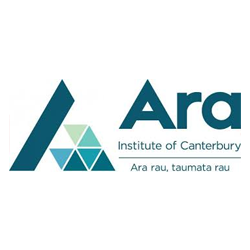
Guidelines for Using Video to Study Workshop or Workplace-Based Trades Learning
Status
Completed: 14 March 2011
Project Details
A project completed in 2011, undertaken by Christchurch Polytechnic Institute of Technology, to help teachers /workplace trainers study the learning of trade skills and knowledge by students or apprentices in classrooms, workshops or in the workplace by using videos and the multimodal discourse analysis method.
Aims:
The main aims of the project were to:
- prepare guidelines which will form the foundation for further study into how apprentices learn a trade
- study both pre-trade learning and workplace learning environments through an analysis of authentic video and voice records of apprentices' trade/craft learning activities
- develop guidelines on how to use videos to collect and learn about trades skills and knowledge acquisition.
Methodology:
The project methodology involved:
- using videos and voice recorders to collect primary evidence of student learning activities
- transcribing and analysing video and voice recordings through processes of multimodal discourse analysis.
Team

Selena Chan
Project Leader
Christchurch Polytechnic Institute of Technology (now Ara Institute of Canterbury)
Flip Leijten
Christchurch Polytechnic Institute of Technology (now Ara Institute of Canterbury)Status
Funding
$10,000.00 (excl GST)
Key Findings
The key findings from the project relate to the production of the guide and include:
- The guide is written to help teachers /workplace trainers build capability to study the learning of trades-skills and knowledge by students or apprentices in classrooms, workshops or in the workplace using a specific research methodology.
- The guide is presented as a ‘how-to-do’ manual. It may be used in conjunction with a series of workshops and/or eLearning course, to learn how to use videos and the multimodal discourse analysis method to study how students learn.
- The guide provides: recommendations for collecting data using video and voice recorders while students or apprentices are engaged in real-world/situated learning or work activities; instructions on how to set up a project using the multimodal discourse analysis approach; direction on how to analyse data collected; and guidance on collating the findings into a report.
- One of the reasons for producing the guide is to introduce the use of multimodal discourse analysis research methodology. This research method is a relatively new but skill intensive form of research, that is useful for studying and understanding learning. Multimodal discourse refers to the study of the various methods used by humans to communicate (the discourse) including using voice, writing and ‘body language’ (the multimodalities). Multimodal discourse analysis details the processes used to scrutinise video data by studying the context and participants’ communications and interactions with others (both verbal and non-verbal).
- Careful examination of video data may reveal aspects of learning not easily obtainable by other data collection methods. Findings can then be applied towards enhancing the development of better learning opportunities for learners. The guide is compiled to provide an introduction to a research process that uses current technology (e.g. digital videos, digital voice recorders and data analysis tools) to investigate real-world activities.
- Additionally, examples from the projects used to help construct the guidelines provided in this report are detailed in boxes. These examples are used to help explain research concepts and model academic writing relevant for preparing research proposals and reports. For example: Two research projects were undertaken to evaluate the suitability of multimodal discourse analysis. One examined the learning of full-time students as they attained welding skills, the other investigated the interactions between apprentices and their trainers as apprentices learned practical skills on building worksites.
Key Recommendations
The key recommendations from the project included:
How students or apprentices learn trade skills | Recommendations within the guide are derived from the learning and experiences from ongoing projects carried out at Christchurch Polytechnic Institute of Technology (CPIT) to study how students or apprentices learn trade skills. To provide background to the contents in the guide, an example of one project (Learning welding: Improving the learning of welding using peer-learning and feedback), is included in Appendix 1.
Hints and pertinent recommendations | The above recommendations are directed to readers of the guide who are new to the research process. Experienced researchers could mine the guide for specific recommendations on using the multimodal discourse methodology. Details for conducting multimodal discourse study are found in Sections 5, 6 and 7.
- 16 March 2011